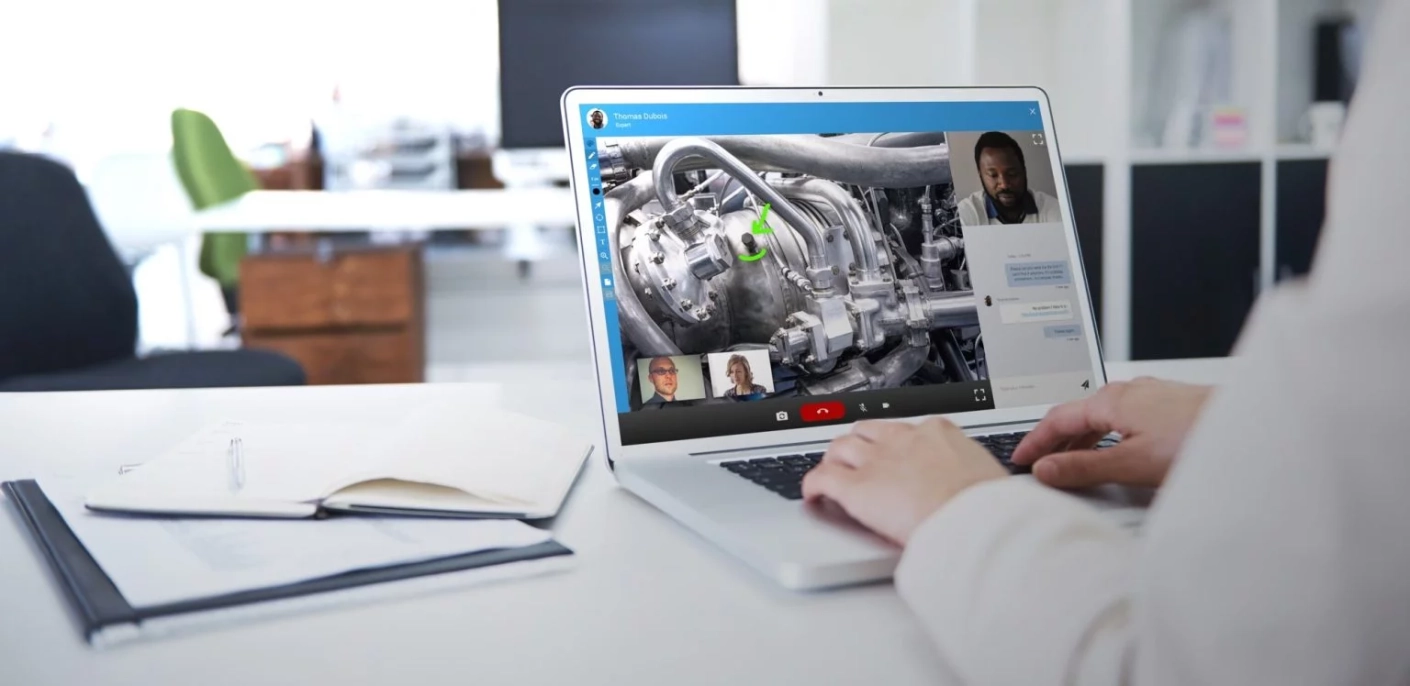8 key factors to consider when choosing a remote

The digital transformation of industrial services has been underway for several years now in many sectors of activity. Many companies have gradually integrated solutions to optimize the operations of their field technicians, including visual assistance. This trend has accelerated with the context of the pandemic linked to COVID 19. You will find here a list of key factors to consider when choosing a video-assistance solution adapted to your organization.
Real-time visual assistance, enriched with augmented reality functionalities, is one of the most innovative transformations introduced in recent years in the industry. Thanks to these solutions, technicians in the field can be guided remotely by experts in the office to conduct diagnostics, repairs, inspections or expert assessments much more quickly. But to choose a video-assistance solution and ensure its success, several factors must be measured and a few pitfalls must be avoided. Based on our experience, whether with large industrial companies or smaller organizations (SMEs, VSEs), here is our advice for choosing your solution.
1. Choose a solution that is already used in your sector of activity
To begin with, it is essential to choose a solution that has already proven itself with players in the industrial services sector. The expertise and experience of the solution provider in your sector of activity is the guarantee that the proposed solution will meet your expectations and prerequisites. Also choose a solution with a significant volume of usage (volume of monthly visual assistance sessions, number of active users…), key KPIs that will attest to the performance of the solution and its ability to absorb traffic increases: annual seasonal traffic peaks, environmental factors such as natural disasters, epidemics…
2. Evaluate the speed of implementation of the solution to your uses and tools
If it is an urgent need and you wish to equip yourself quickly with this type of solution, take into account the editor’s capacity, on the technical and human aspects, to deploy in a fast way: availability of the available interface configuration levels, fineness of the parameter settings or even availability of project resources. In most cases and for a quick implementation, we advise you to choose a SaaS solution that will limit the technical investment on your side and can allow a deployment in less than two days.
3. Choose a solution that is compatible with most connected mobile devices
Visual assistance solutions for industrial services allow to put technicians and experts in touch with each other. Technicians in the field can be equipped with smartphones, tablets or other equipment such as connected headsets, connected glasses, drones, endoscopic cameras or any other type of connected objects. Make sure that the solution you are going to adopt is compatible with as many connected devices as possible. Ideally, choose a solution that gives you the freedom to choose the terminal you want to use. This will save you from having to renew your equipment, from having to use a specific terminal or from being able to add new equipment as you go along. To meet this need, it is interesting to move towards 100% web-based solutions that will allow you to access the solution via a simple web browser.
4. Choose a supplier capable of supporting you in the launch of your project and in the use of the solution
If you wish to provide your teams with a visual assistance solution, it is not enough to select a solution that is sufficiently modular and simple to deploy technically. You will also need to be sure of the publisher’s ability to support you in its implementation. Make sure that your supplier has a customer-centric organization and that it will offer you dedicated support in the first phase of commissioning: configuration, setting and customization, possible integration with your existing business tools, user training, deliverables, commissioning and feedback after a predefined period of use, including KPIs analysis; the most important thing is to have a dedicated project contact, from the commissioning and throughout the operating cycle through regular exchange and monitoring points. The implementation of a video-assistance solution will change your practices, it is essential to support your users and provide them with a contact person on whom they can rely.
You should also be vigilant about the level of support offered by the publisher and its commitments regarding response times and incident resolution: mainly the size of the support team and the process for handling customer requests.
It is essential to opt for a visual assistance solution that offers you customer support that is easy to reach, ideally via different channels (email, chat, telephone, video) and also with a level of technical expertise that allows for the proper handling and processing of your requests. A video-assistance solution can help you quickly resolve a problem you encounter, but in the event of a malfunction or service interruption, you will surely not want to be in contact with a call center that will record your request for later resolution, or worse yet, not get assistance for your requests.
5. Prefer a solution that clearly displays its commitment to security
Remote collaboration between technicians, experts and customers can lead your teams to process sensitive information and personal data of your customers (photos, videos, documents, equipment…). Prefer a visual assistance solution where all video sessions and data exchanged are encrypted and protected against unauthorized access or data leakage. If your company, your technicians, or your customers are in Europe, opt for a solution that is committed to respecting the obligations of the GDPR and that guarantees that all data stored will be stored in French or at least European data centers.
6. What features to expect from a visual assistance solution?
A visual assistance solution must allow your experts, technicians and possibly your partners and customers to collaborate remotely as well as on site. You must therefore make sure that the chosen solution offers functionalities that make it possible to forget about distance, and to be able to see or do the same thing as in person. Here is a list of the key features you will need:
- Video communication: the exchange in video must allow the different interlocutors to share the video streams of their cameras and to show a machine or an environment easily.
- Communication between mobile terminals: experts are most often in their office and connect to a computer, but it is also possible that the expert is in a mobile situation. It is therefore necessary to be able to communicate between two or more mobile terminals.
- Multi-participant communication: a remote expertise can often require the use of several expert resources. It is important that visual assistance can take place between more than two interlocutors.
- Screen sharing and file sending: the ability to share documents or a work environment in real time.
- Augmented reality, remote photo taking and annotations: Ability to guide a caller remotely with real-time markers on the video stream, remote photo taking and sharing annotations in real time.
- Artificial intelligence: these new features will allow you to considerably enrich your assistance paths and will facilitate your decision making thanks to the automation of certain tasks through image and text recognition: automatic detection and/or characterization of faults during the session, display of technical documentation of the equipment diagnosed after detection of the serial number or bar code, or troubleshooting (identification of disconnected cables, error codes, LED indications, etc.).
7. Opt for a solution that integrates with your business tools
Industrial service companies have their own business tools to manage their data (customers, stock, ticketing…). If you can, and even if this type of integration is usually done in a second step, you should rather focus on an editor that will propose APIs and connectors necessary to integrate the solution in your business environments.
8. Bonus: Take into account the added value of editors who develop their end-to-end service offer
Be vigilant about the content and architecture of the solution proposed by the publisher. Indeed, some publishers outsource and integrate into their solutions certain technological building blocks essential to the provision of a visual assistance service, which will mechanically increase the risks, particularly on updates, correction of malfunctions and response times. Prefer an editor that masters its entire architecture and develops and maintains its own technology.
Discover our visual assistance solution
Read also:

![[CX Industry Voices] Interview with Claire Boscq](/scripts/files/685be577407c05.79748508/claire-boscq.png)

![[CX Industry Voices] Interview with Simon Macklin](/scripts/files/6853c1e544e284.60938932/simon-macklin.png)